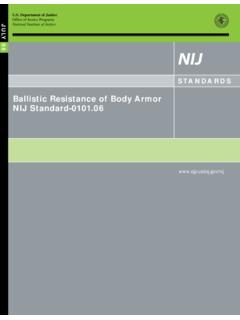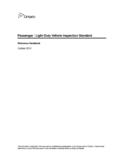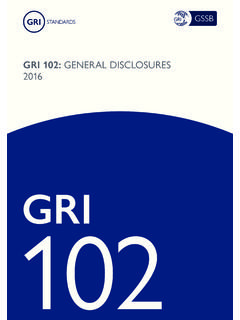Transcription of A Practical Guide to Machine Vision Lighting
1 A Practical Guide to Machine Vision Lighting Daryl Martin Midwest Sales and Support Manager Advanced illumination February, 2013. A Practical Guide to Machine Vision Lighting Abstract: It is well-understood that the quality and appropriateness of Lighting are critical aspects for creating a quality, robust, and timely Vision inspection. In addition to an understanding of illumination types and techniques, geometry, filtering, sensor characteristics, and color, a thorough analysis of the inspection environment, including sample presentation and sample-light interactions, provide a foundation upon which to design an effective Vision Lighting solution. It is suggested that designing and following a rigorous Lighting analysis sequence will provide a consistent, and robust environment, thereby maximizing time, effort, and resources.
2 Items better used in other critical aspects of Vision system design, testing, and implementation. Introduction Perhaps no other aspect of Vision system design and implementation consistently has caused more delay, cost-overruns, and general consternation than Lighting . Historically, Lighting often was the last aspect specified, developed , and or funded, if at all. And this approach was not entirely unwarranted, as until recently there was no real Vision -specific Lighting on the market, meaning Lighting solutions typically consisted of standard incandescent or fluorescent consumer products, with various amounts of ambient contribution. The objective of this paper, rather than to dwell on theoretical treatments, is to present a Standard Method for Developing Sample Appropriate Lighting .
3 We will accomplish this goal by detailing relevant aspects, in a Practical framework, with examples, where applicable, from the following 3 areas: 1) Knowledge of: Lighting types, and application advantages and disadvantages Vision camera and sensor quantum efficiency and spectral range Illumination Techniques and their application fields relative to surface flatness and surface reflectivity 2) Familiarity with the 4 cornerstones of Vision illumination: Geometry Pattern, or Structure Wavelength Filters 3) Detailed analysis of: Immediate Inspection Environment Physical constraints and requirements Sample Light Interactions with respect to your unique samples When the information from these 3 areas is accumulated and analyzed, with respect to the specific sample and inspection requirements, we can achieve the primary goal of Machine Vision Lighting analysis - to provide sample appropriate Lighting that meets 3 Acceptance Criteria consistently.
4 1) maximize the contrast on those features of interest 2) minimize the contrast elsewhere 3) provide for a measure of robustness As we are all aware, each inspection is different, thus it is possible, for example, for Lighting solutions that meet Acceptance Criteria 1 and 2 only to be effective, provided there are no inconsistencies in part size, shape, orientation, placement, or environmental variables, such as ambient light contribution (See Fig. 1). Fig. 1 - Cellophane wrapper on a pack of note cards. Left: meets all 3 Acceptance Criteria. Right: meets only criteria 1 & 2. In this circumstance, the wrinkle is not precluding a good barcode reading, but what if the wrinkles were in a different place in the next pack on the line? Vision Illumination Sources and Spectral Content The following Lighting sources are now commonly used in Machine Vision : Fluorescent Metal Halide (Mercury).
5 Quartz Halogen Fiber Optics Xenon - Strobing LED - Light Emitting Diode Fluorescent, quartz-halogen, and LED are by far the most widely used Lighting types in Machine Vision , particularly for small to medium scale inspection stations, whereas metal halide and xenon are more typically used in large scale applications, or in areas requiring a very bright source. Metal halide, also known as mercury, is often used in microscopy because it has many discrete wavelength peaks, which complements the use of filters for fluorescence studies. A xenon source is useful for applications requiring a very bright, strobed light. Fig. 2 shows the advantages and disadvantages of xenon, fluorescent, quartz halogen, and LED Lighting types, and relevant selection criteria, as applied to Machine Vision .
6 For example, whereas LED Lighting has a longer life expectancy, quartz halogen Lighting may be the choice for a particular inspection because it offers greater intensity. Fig. 2 Comparison and contrast of common Vision Lighting sources. Historically, fluorescent and quartz halogen Lighting sources have been used most commonly. In recent years, LED technology has improved in stability, intensity, and cost-effectiveness; however, it is still not as cost-effective for large area Lighting deployment, particularly compared with fluorescent sources. However, on the other hand, if application flexibility, output stability, and longevity are important parameters, then LED Lighting might be more appropriate. Depending on the exact Lighting requirements, oftentimes more than one source type may be used for a specific implementation, and most Vision experts agree that one source type cannot adequately solve all Lighting issues.
7 It is important to consider not only a source's brightness, but also its spectral content (Fig. 3). Microscopy applications, for example often use a full spectrum quartz halogen, xenon, or mercury source, particularly when imaging in color; however a monochrome LED source is also useful for B&W CCD camera, and also now for color applications, with the advent of all color RGB and white LED light heads. In those applications requiring high light intensity, such as high-speed inspections, it may be useful to match the source's spectral output with the spectral sensitivity of your particular Vision camera (Fig. 4). For example, CMOS sensor based cameras are more IR sensitive than their CCD counterparts, imparting a significant sensitivity advantage in light-starved inspection settings when using IR LED or IR-rich Tungsten sources.
8 Mercury Quartz Halogen / Tungsten 100. Daytime Sunlight Relative Intensity (%). 80 Fluorescent 60. White Xenon LED. 40. 20 Red LED. 0. 300 400 500 600 700. Wavelength (nm). Fig. 3 Light Source Relative Intensity vs. Spectral Content. Bar at bottom denotes approximate human visible wavelength range. 80. IR Enhanced Analog IR Block (700 nm Short Pass). 60 Digital Absolute QE (%). UV Enhanced Interline Analog Transfer Standard Analog 40. CMOS. Scotopic 20. Photopic 0. 300 400 500 600 700 800 900 1000. Wavelength (nm). Fig. 4 Camera Sensor Absolute Quantum Efficiency vs. Wavelength. Bar at bottom denotes approximate human visible wavelength range. Additionally, the information in Figs 3-4 illustrates several other relevant points to consider when selecting a camera and light source.
9 Attempt to match your sensor's peak sensitivity with your Lighting source's peak wavelength to take the fullest advantage of its output. Narrow wavelength sources, such as monochrome LEDs, or mercury are beneficial for passing strategic wavelengths when matched with narrow pass filters. For example, a red 660 nm band pass filter, when matched to red LED light, is very effective at blocking ambient light on the plant floor from overhead fluorescent or mercury sources. Sunlight has the raw intensity and broadband spectral content to call into question any Vision inspection results use an opaque housing. Even though our minds are very good at interpreting what our eyes see, the human visual system is woefully inadequate in terms of ultimate sensitivity and spectral dynamic range let your eyes view the image as acquired with the Vision camera.
10 The Cornerstones of Vision Illumination The 4 cornerstones of Vision illumination are: 1) Geometry - The 3-D spatial relationship among sample, light and camera. 2) Structure, or Pattern - The shape of the light projected onto the sample. 3) Wavelength, or Color - How the light is differentially reflected or absorbed by the sample and its immediate background. 4) Filters - Differentially blocking and passing wavelengths and/or light directions. Understanding how manipulating and enhancing sample contrast using the 4. cornerstones is crucial in meeting the 3 aforementioned Acceptance Criteria for assessing the quality and robustness of Lighting . Effecting contrast changes via Geometry involves moving the sample, light, and/or camera positions until a suitable configuration is found.







